Last month, the Sage of Kettering and I went to Venice for a few days, marking decades of friendship. The visit to the Most Serene Republic, home to distrust of government that lasted for over 1,000 years, fell during the Biennale ‘Festival’, when modern art invades Venice, which for all its ghastly, sinister absurdity, at least allows the occasional foray into fine, otherwise closed buildings, in which the modernists squat like bats dripping rabies with their urine, and I thought that I would share some pictures from our trip.
The gardens of the Armenian Institute, in Dorsoduro, open for the Biennale. Venice was long a refuge for the Armenian diaspora, and there is an Armenian monastery island.
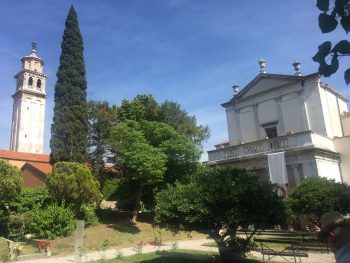
Within the Armenian gardens, Tibet had an exhibition, tactfully reclaiming a Buddhist sun symbol from the last power to occupy Venice before the resumption of Italian rule.

A trip to San Giorgio Maggiore, opposite St Mark’s Square, gave us a full taste of the modern ‘Artist’. Behind the fine façade…
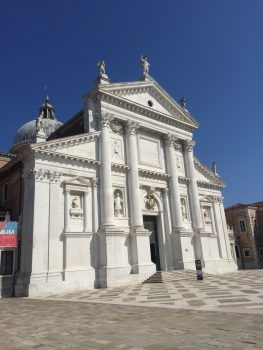
…lurked the artist.
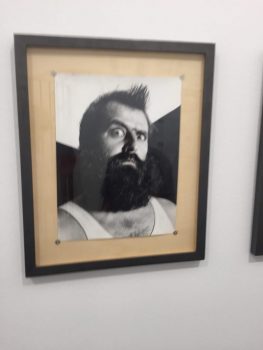
And of his work, as the Sage pointed out, with one opera, you could not tell if it had been vandalised or not.
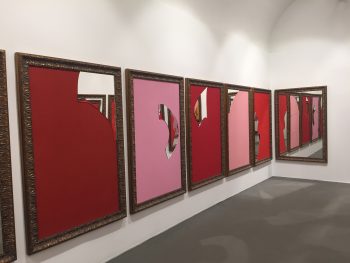
And of course, there was the use of contrast.
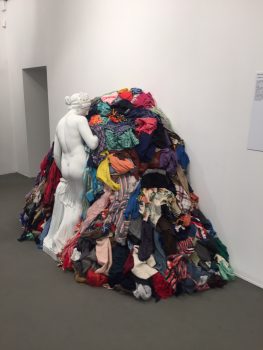
Uplifted by this, we needed a snack and prosecco (archive pic) at a bar in Dorsoduro just off the Giudecca canal, opposite a Squero (boat yard) where gondolas are made, still following a sumptuary law; any colour you like, so long as it’s black.
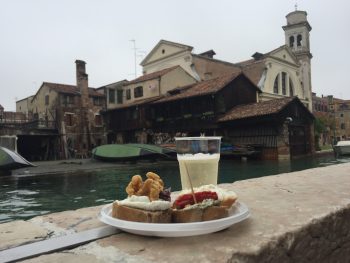
And just over the Guidecca Canal from the bar, the Redentore (Redeemer) Plague church, testament to a lack of understanding of pathogenesis, and Andrea Palladio’s eye for style.
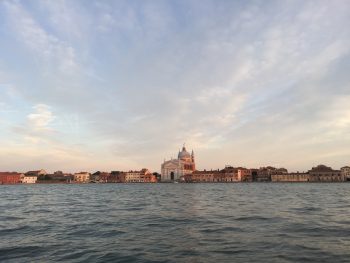
A visit to the Doge’s Palace and the grim dungeon, but luxurious by the standards of Stalin’s prisons. This would have had a mere 5 people, and some cells had a capacity of 2.
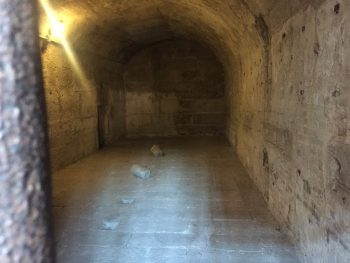
And the Guardia di Finanza boats lurked, ready to levy for the heavy hand of Rome, taxes, and woe betide any retailer who does not proffer a receipt for each and every purchase, one of the most irritating aspects of modern Italy.
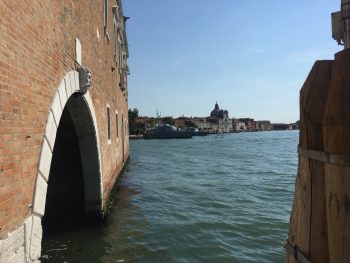
The Biennale spread its wings far and wide, such as this ‘car’ in Campo San Stefano. How many Cubans would wish to try their chances in such a vehicle?
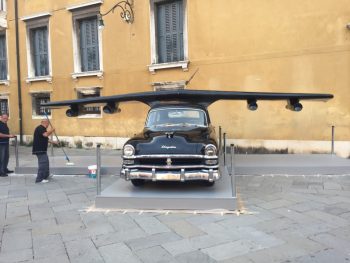
A definite highlight was a trip into the lagoon to see Torcello, the first inhabited island in the lagoon, where the Veneti built a cathedral, starting in 639 AD under the Exarchate of Ravenna. Torcello is an astonishingly peaceful contrast to the bustle of central Venice, a few houses, some restaurants and the Cathedral, and the main sound in June was birdsong.
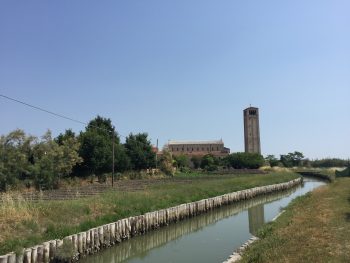
The Sage found himself the Bishop’s Throne to sit on, outside the cathedral.
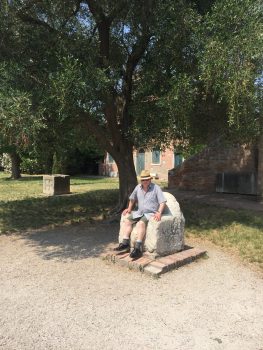
A gecko on the cathedral wall, note the building materials. Much stone from old buildings has been recycled.
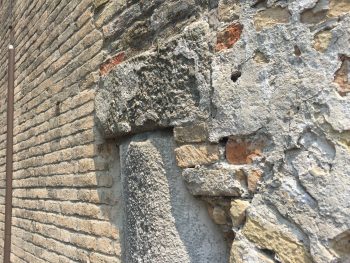
The view from Torcello Campanile
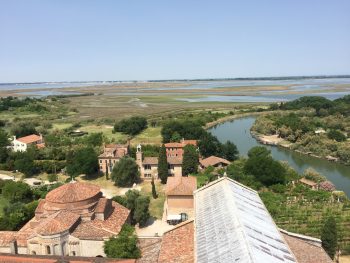
A fisherman on the lagoon, off Torcello.
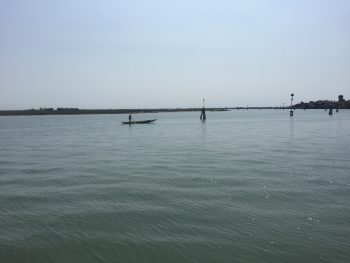
A welcome reminder of how they got to be civilised.

Back in St Mark’s Square, the statue of the Tetrarchs, on the wall of St Mark’s Basilica, was virtually unremarked. A useful tip if you do visit the Basilica is that you can (a) queue outside for up to 45 minutes and get in for free or (b) pay 2 Euros and get a time slot when you get into the procession through the basilica straight away, a rare implicit recognition of the benefit of pricing.
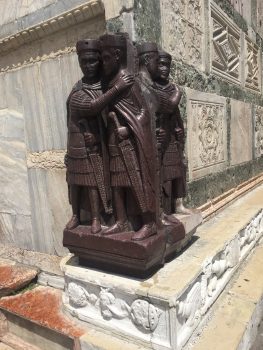
And within the Doge’s Palace, a column with contrasting faces.
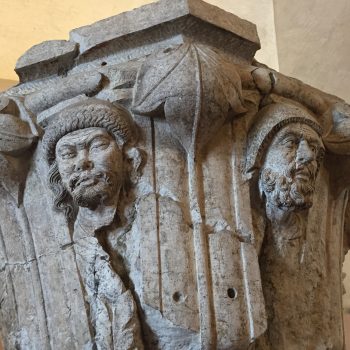
On the day-to-day side, the logistics of Venice never cease to delight; a mobile bookshop.
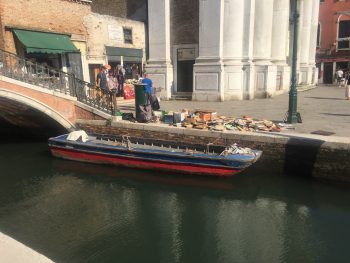
And the secret of how Venice sustained itself in the saline lagoon, the wells dug below the lagoon into the fresh water aquifers underneath (now capped and sealed).
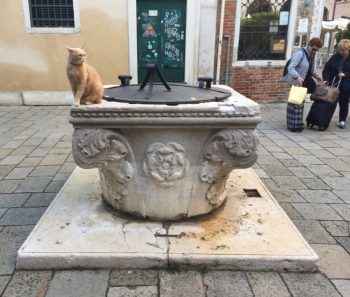
A typical scene in Cannaregio district, near the Ghetto, where we had a nice meal in a Jewish restaurant, whose ‘meat sauce’ was not at all like Bolognese 🙂 There was a grim reminder of present-day realities as there is a permanent Army post in the Ghetto now.
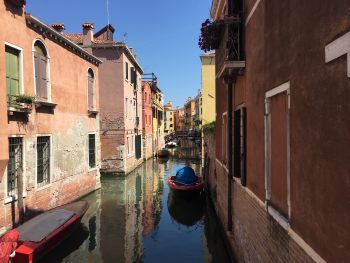
And of course, outside the Ghetto, there was seafood.
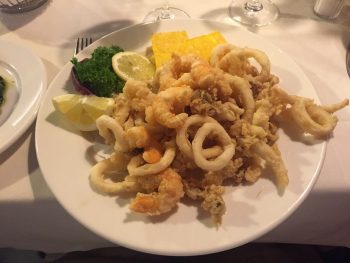
And the locals were friendly.
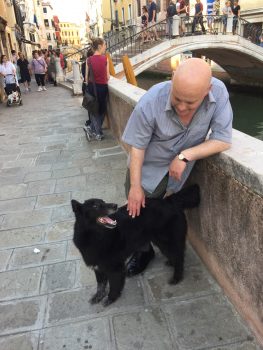
Another highlight was the Basilica of Saints John and Paul, virtually empty of tourists on a Monday afternoon, despite having 25 Doges entomned inside, and a fine equestrian statue outside…
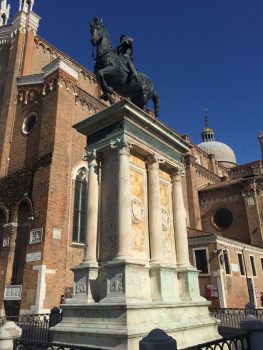
…and the finest little church on Earth? Santa Maria dei Miracoli in Castello district, tucked away from the crowds.
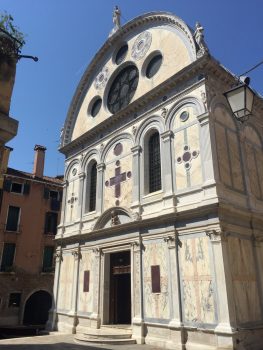
Yet another Plague Church, the Salute.
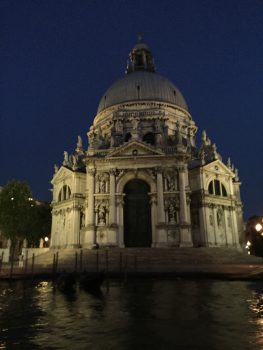
There is lots of graffiti in Venice, this one says ‘The Left is the problem’. Not sure who Yago is, but I hope he is free.
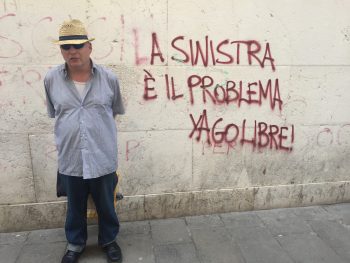
And the first aerial bombardment in warfare was of Venice by the Austrians, using a balloon, on 12th July 1849. The Church of Tolentin was bombarded by Austrian cannons on 6th August 1849, and they have put the cannonball in the front of the church, facing, as it happens, the Austrian Consulate.
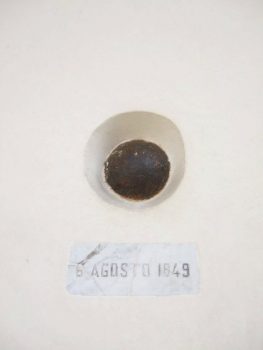




A wonderful place – the finest city in the world (imagine if Paris was all like the islands in the Seine). As you pointed out the guilds (or rather their compulsory nature) were the ruin of Venice as a great economic power – I think there was an article from FEE on the growth of restrictive laws in Venice. But the world is left with the magnificent city – the triumph of human effort (work), intelligence and artistic taste over natural circumstances.
However, I rather doubt the wonders of the place are best shown with that fat bald man, with the red skin, in the pictures. Who is he?
‘he’ is the newly proclaimed Doge of Venexia, I know that as I declared him the new Doge (in Italian) in Saint Mark’s Square, and there was no objection. The position was merely vacant, not abolished, following the resignation of Ludovico Manin.
Mr Ed, thanks so much for the photos, the explanations, the spots of humour, the posting in general. Very enjoyable; you must have had a good time. :>)))
And for creating the new Doge of Venexia.
(I have a source who indicated to me that he was glad he had made the trip.)
What lovely photos. I’m sure it was a wonderful trip; it would have been great fun to accompany you.
Sage of Venice and Doge of Kettering? That’s a lot of responsibility.
“A welcome reminder of how they got to be civilised.” Do please explain. I thought it was because they had water for protection and did a lot of trading.
The tetrarchs’ statue. I thought that was contemporary. So, how come it ended up in Venice?
Venexia, not Venezia?
Hmm. So they were nicked from Constantinople in all probability. And they represent a decline in the standard of art. This is sounding awfully familiar.
Small Venice is Venezuela. Amerigo Vespucci was an intellectual. Venice what a beautifull city.
Iago?
Patrick,
Sorry for my obscurity. I live within a rifle shot over the Kettering Borough border, but the width of the river keeps me from knowing the politics well enough to know if or when the Sage will be the Doge of Kettering, but I think that would be quite a coup, and whatever the Department of Communities or whatever it is called would have to say would be quite a laugh.
The ‘got to be civilised‘ is an obscure reference to the sign which declares the land to be private property, which kept the water drinkable and the trading fairly free for over a Millennium.
‘Venexia‘ is the Venetian dialect word for ‘Venice’, it still appears in adverts, and on street signs (as does ‘calle‘ for ‘street‘ (the same word in Spanish as per fcal) but the Venetian dialect was suppressed under Italian rule in a manner that the Austrians never had any reason to do.
The art of the Tetrarchs, I would put on a par with the Lewis Chessmen, and over 1,000 years ahead of the Biennale’s offerings. I should have mentioned that we found a British pavilion for the Biennale quite by chance, and it was a dark room with some stringy stuff hanging down from the ceiling like a white plastic curtain cut to ribbons, all paid for by the British Council, with borrowed money.
Patrick they were civilised before they fled to the islands – dump savages in a marsh and it remains a marsh, but civilised (and capable) people create Venice.
I must admit I did a double-take when I saw that picture. While I was visiting Japan I noticed that swastikas are used on tourist maps to mark the location of temples. I am told this custom is diminishing to comply with foreign sensibilities, although I didn’t mind it. It wasn’t the Buddhists’ fault that Adolf’s gang nicked their symbol.
There is lots of graffiti in Venice, this one says ‘The Left is the problem’.
I googled, and that graffiti has been up for at least two years (date of a reddit thread asking for translation). Google also reports a Facebook page for “Yago Venezia” (but I don’t do Facebook).
As to Italian graffiti:
In Rome, about 10 years ago, I saw a graffito near the Vatican denouncing Marshal Badoglio and the “infamy” of the Italian surrender to the Allies on 8 September 1943.
Rich Rostrom (July 18, 2017 at 4:54 am), a decade ago, in Dumenza, a small Italian town in the far north near the Swiss border (that must have been one of the last to be occupied by the allies at the end of WWII), I saw a stone-carved notice, dating from very late 1943 or 1944 IIRC, that said “La class lavoratrice e l’esperanza, la potenza, la cardezza d’Italie – Mussolini”, which my poor Italian suggests means “The working class is the hope, the power and the ?something? of Italy – signed by that poor Italian joke of a dictator called Mussolini”. (The “republic of sano” – the final phase of Italian fascism after Mussolini was rescued by Hitler – was very left-wing in its rhetoric and in such few actions as it took.)
So I’m not at all surprised that the bit of graffiti you saw in Rome is still there.
Of coorse, if the scrawl had said, “Marshal Badoglio, if you’re going to betray one side and join the other, do it competently, you idiotic bungling coward!!!”, then it would be both historically accurate and very understandable.
Tremendous photos! Thanks for sharing. That looks like a great place to visit.
Sage of Kettering takes over Venice. Hold the front page…..
Great photos. Thanks, chaps.
I expect Doge Paulo will extend Venexian recognition to Liberland in due course.
‘The “republic of sano” – the final phase of Italian fascism after Mussolini was rescued by Hitler – was very left-wing in its rhetoric and in such few actions as it took.’
The “Italian Social Republic”, no less.